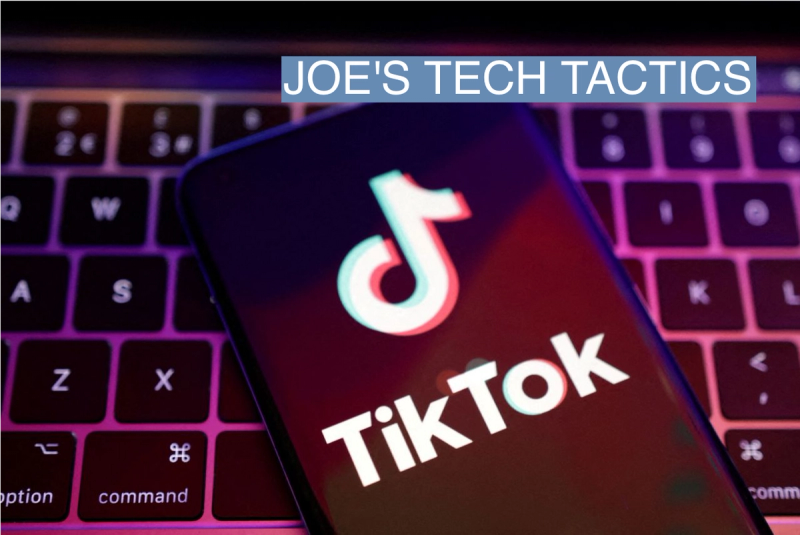The Scoop
President Biden plans to sign an executive order that could dramatically limit U.S. investments in China, according to three people with knowledge of the plans.

The president is expected to sign the order as early as this month, and is also considering at least two other executive orders:
- One that would target services including TikTok by limiting how Chinese internet companies can collect data on U.S. citizens.
- Another that would narrow the kinds of technology that can be sold to Chinese customers.
Biden’s plans represent a more carefully drafted, and lower-drama U.S. attempt to limit the influence of Chinese technology companies after Donald Trump’s chaotic, failed drive to force the sale of TikTok to a U.S. owner just before the 2020 US election. The move pulls on a common thread in America’s deeply-divided politics, which is a growing focus on economic and security competition with China. A TikTok spokeswoman did not respond to requests for comment.
Administration officials were particularly alarmed this March by a report in The Information that the Chinese arm of the Silicon Valley venture firm Sequoia Capital has begun raising a new, $8 billion fund for investments inChinese technology, according to people close to the administration. A Sequoia spokeswoman declined to comment.
But the impact of the executive orders will depend on their details: They could simply serve as tough-on-China political statements before the November election, or could accelerate the decoupling of the U.S. and Chinese economies. A White House spokeswoman declined to comment.
The executive orders follow July’s CHIPS Act, in which Congress offered American manufacturers billions of dollars to bring semiconductor manufacturing back to the United States. The White House’s September plans are the other, tougher side of the same policy push, aimed at reining in companies that have profited from decades of open trade and showing midterm voters that Democrats are equally willing to confront China. A Biden Administration official said the upcoming elections are not a factor.
The executive order on investment was an idea initially included in the CHIPS Act written to curtail outbound investment to China. U.S. companies argued the provision was confusing and too broad, and it was dropped from the final bill.
Another bill, supported by the White house, would create a new administrative review process for outbound investments to “countries of concern,” such as China. But according to a person familiar with the thinking of those involved in the effort, the Biden Administration intends to issue the executive order before the elections.
The details of the order could still change, but the administration has considered at least two ways of dealing with U.S. investments in China. One approach would be to require disclosures for any investments in semiconductors, artificial intelligence, quantum computing and potentially other industries like rare earth minerals and electric cars. The other would be to set up a system that would give the government the ability to block investments outright, in the way that the Committee on Foreign Investment in the United States can block inbound investments from China and other countries.
A third option being discussed by those involved is to do both. Biden could require disclosure and then, if something problematic arises, take further action to block it. That option is more appealing to U.S. companies and could be just as effective.
The U.S. invested $284 billion in China between 1990 and 2020, according to the Rhodium Group. About $30 billion came from tech.
For all the focus on Silicon Valley venture capital firms, there are actually relatively few VC firms that have invested in a major way in China. And some that have, such as Sequoia, established separate entities in China, making it unclear how U.S. regulations would apply to them. It’s also not clear how new rules would apply to firms like BlackRock, which invest in China’s equities market.
In this article:
Reed’s view
For all the Washington chatter about standing up to China, there’s remarkably little consensus among the Americans focused on this project over how to actually disentangle the world’s two biggest economies. While some China hawks seem to want to simply cut economic ties, figures in both parties favor a more surgical approach.
They have been feeling added urgency, though, since July, when the Chinese firm SMIC reached the milestone of producing 7-nanometer semiconductors, so small that they are on par with Taiwan’s TSMC, the world’s leading advanced chip maker. It was a sign that China’s efforts to gain semiconductor independence are progressing faster than some expected.
These leading edge chips are the brains of all technology, from consumer to military. China’s inability to make these chips itself at scale — it’s still reliant on Taiwan, the U.S. and other western countries — The big U.S. lead in semiconductor technology is a key point of leverage, and if China gains the lead, it would tilt the balance of power in China’s direction.
It would also give China the ability to better aid enemies of the West. China has been selling semiconductors to aid Russia’s war effort, for instance. But it can’t sell Russia the most advanced chips — yet.
While the order will likely also apply to Russia, Iran and North Korea, the industries targeted are most relevant to China, which has been spending billions to catch up to the U.S. and gain technological independence, often with help from U.S. companies.
Room for Disagreement
But the U.S. isn’t the only place China can get investment and crucial technology, so new executive orders or even legislation can go only so far without allies in Europe and Asia agreeing to similar policies. According to one person with knowledge of the matter, Biden officials have floated the idea to European Union countries. So far, it’s been a tough sell.

